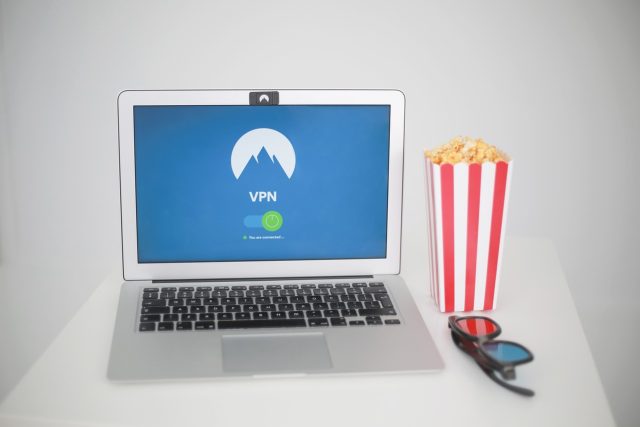Some users may feel uncomfortable when discussing a virtual private network (VPN). Though its use is growing, the majority of Internet users who conduct their regular daily activities online presumably don’t want to take the risk of trying out a function that may not be widely known, much less shell out money for it.
A virtual private network has several benefits. If we sum this up, a VPN shields its customers by encrypting their data, as well as hiding their IP addresses, making it impossible to track their browsing history or location. Greater security and autonomy for those who want to access prohibited or region-specific content (porn, the best Binance online casinos in 2024 here, movies from specific streaming platforms, such as Netflix, etc.) are both made possible by this increased anonymity. So, users who desire an extra layer of security and anonymity online should absolutely learn more about how it works. Because of this, we explain in this text the key components that you need to comprehend.
Some of them are useful for marketing purposes since they can be quickly renamed to draw in as many people as possible, while others are the basic foundation of a virtual private network and require specific attention. The majority of virtual private networks on the market, however, already include the majority of the capabilities that are listed below, so you as a user will have to worry about setting them up yourself.
Encryption
Blocking attempts by unauthorized users to intercept, access, or manipulate the content of your Internet communication is one of the primary purposes of any virtual private network. This is accomplished by using the technique known as encryption to transform your actual Internet traffic into an unreadable and encrypted state.
An encryption key that can only be customized by authorized users is used to protect data. A decryption key is also necessary for the opposite procedure, decryption. Your data is encrypted while it travels through a virtual private network tunnel and is finally decrypted and restored to its original form at the other end.
Three different methods of encryption exist, and they are:
- Symmetric encryption – Data is transformed using an algorithm, and the “key” is a component of the method that alters the encryption’s overall result. The data is encrypted or decrypted using the same key by both the sender and the recipient.
- Public key encryption – The fact that both the sender and the recipient of the data must share the same key is symmetric encryption’s obvious drawback. To begin communication in that circumstance, the key must be given to the virtual private network server, but in the event that it’s intercepted or discovered, it can be used to decode all data. When transferring a key, a solution is provided via public key encryption. It employs a two-key system, with one of the two being open to the public. Only the matching decryption key and the public key can be used to open data encrypted with one another.
- Hashing – The Secure Hash Algorithm (SHA), the third encryption method employed by virtual private networks, is intended to protect the data’s integrity and to ensure that it originated from the original source. With this kind of technique, the certificate is returned via a hashing procedure, which also serves to ensure that the verified data was transmitted by a verified source and not by a third party engaged in interceptive activity.
Split Tunneling
A typical characteristic of virtual private networks is split tunneling, which enables the user to select which apps to protect with them while allowing others to continue running normally. Split tunneling, although still passing over the local network, is supposed to assist in private a portion of internet traffic.
Since it only sends a portion of the web traffic through the tunnel, it can be a beneficial tool for bandwidth optimization. You can safeguard sensitive data in this way if you need to transfer it.
Data and Bandwidth Limitations
Limits on data and bandwidth are used in virtual private networks to regulate the overall data flow over the network. They determine the volume of bandwidth that is free to use or the amount of data that can be transported.
To prevent issues online, VPN service providers need to have clear and well-defined limits, but premium ones, like ExpressVPN, NordVPN, Pia, or Surfshark, have none because of the caliber of their infrastructure.
Online Activity Record Removal Policy
The foundation of a virtual private network is the idea that it never maintains track of its members’ online activities. Additionally known as “no-logs policy” or “zero-logs policy”, this is. Many users choose to utilize a virtual private network specifically because of this function, which is always the key marketing ace up the sleeve.
These promises may appear ideal in the realm of advertisements and advertising, but the fact of the matter is quite different because only a few providers of VPN services offer the entire erasure of all user online activity.
Simultaneous Device Connection
The term “simultaneous device connection” describes how many devices can be connected to a virtual private network at once. Fewer virtual private networks are able to support more simultaneous connections than most do. It’s crucial to understand that even if a virtual private network can be set up on every device being used, it can’t be launched simultaneously on all of them.
We advise you to pay close attention to RAM servers if you’re unsure which VPN service supplier to pick and if your primary motivation for using a virtual private network is to hide your online behavior. Make sure that your freshly established virtual private network makes use of such servers because they act as temporary storage for data that’s destroyed once the hardware is shut off.
Kill Switch
“Kill Switch” is a function that, in the event that the virtual private network breaks down or disconnects, departs your device from the Internet.
In order to prevent data from leaving the private VPN tunnels, this is one of the most crucial features of virtual private networks.
IP Address Protection
Any virtual private network’s primary function is to conceal the user’s actual IP address. Although protecting online activities should always be a top priority, it’s possible that the IP address is still retrieved, which can reveal your location, web browsing history, and online behavior. This type of annoyance is referred to as an “IP leak” or “VPN leak”.
Leading VPN service providers have additional protection against such leaks built in, and you can frequently find tools in their offering that allow you to compare your real IP address with the IP address given to you by the virtual private network itself. A functioning virtual private network should prevent IP address duplication.
IP Shuffle
A feature called “IP shuffle” generates random number formats from an IP address. The virtual private network accomplishes this by automatically connecting you to a different VPN server after a predetermined amount of time. The majority of virtual private networks let users specify a shuffling frequency that can be anything between once every 10 minutes and once an hour or once a day.
A virtual private network ought to be a top concern for many users if they wish to raise their degree of security and anonymity throughout their Internet activities. Challenges on the Internet are increasing daily. Virtual private networks have all of the essential elements that we have outlined, so it’s important to understand what they all imply so that you’re aware of their possibilities and understand what each of their configurations signifies.



The Most Read
Сryptocurrencies
Bitcoin and Altcoins Trading Near Make-or-Break Levels
Financial crimes
Thieves targeted crypto execs and threatened their families in wide-ranging scheme
Financial crimes
Visa Warning: Hackers Ramp Up Card Stealing Attacks At Gas Stations
News
Capitalism is having an identity crisis – but it is still the best system
Uncategorized
The 73-year-old Vietnamese refugee is responsible for bringing Sriracha to American consumers
Uncategorized
Electric Truckmaker Rivian, Backed By Amazon, Ford, Raises Whopping $1.3 Billion